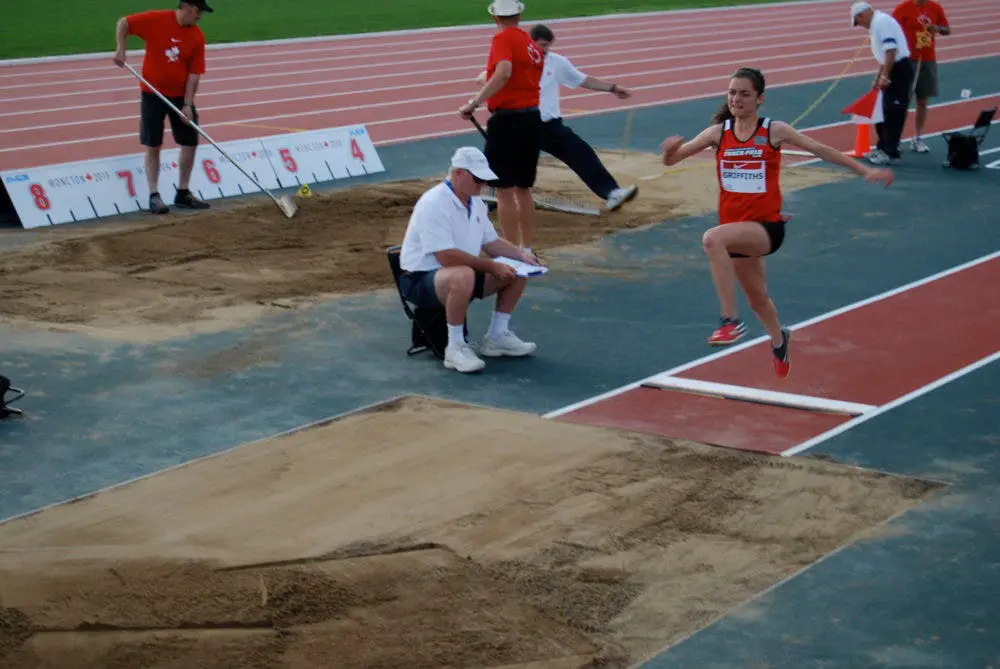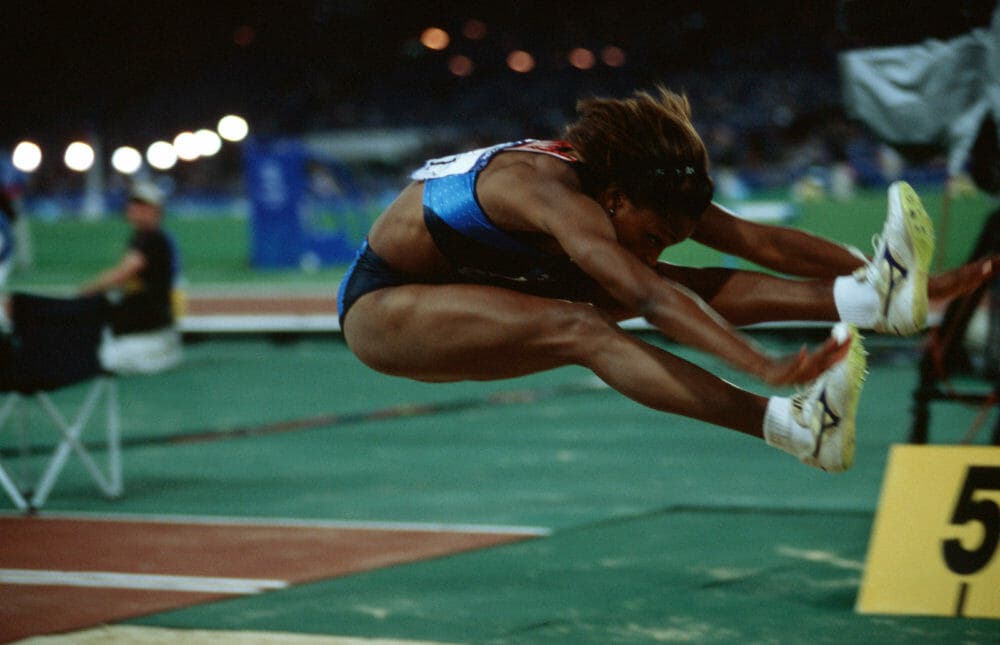The long jump, also called the long jump, is a solitary athletics sport that has been part of the Summer Olympic Games since Athens in 1896. The long jump is performed over a large sand pit and it is important to meet a series of rules and requirements for the jump to be considered valid; in case of not fulfilling them, then null jump is declared.
What is the long jump?
This sport, which has been practiced since the Olympic Games of Antiquity (708 BC), belongs to the king of individual sports, that is, athletics; It is called the king of individual sports because it includes basic movements such as running, jumping, turning, etc.; and other types of motor skills are added. Athletics is divided into four modalities: races, walks, throws and jumps, among which are the long, high, triple and pole jumps.
The long jump has its origins in ancient Greece. Since those times, people jumped forward, holding a stone in each hand for greater inertia; and the starting position was standing. Over the centuries, this form of jumping has only evolved. Within its characteristics we could say that it is a stable medium sport, which is executed alone and without accessories.
The objective of this jump is basic: to get as far as possible. To achieve this objective, a horizontal race must be carried out, from a starting line.

Long jump phases
To correctly execute the long jump, four stages or phases must be followed:
- Race: This phase, along with the takeoff phase, is the basis of all long jumps. To calculate the exit distance, you must do a very precise calculation. Afterwards, the race is carried out in progression and raising the muscles.
- Batida: the batida phase is responsible for converting the race into a jump. This phase begins when the take-off foot lands on a board and ends when the athlete loses contact with the board. The take off leg should be fully extended and match the elevation of the free leg that is bent. This stage of the long jump is characterized by an energetic movement of the arms.
- Flight: As its name suggests, it is the phase that occurs when the kick leg loses contact with the board and the body is suspended and moved through the air before starting the descent.
- Landing: The landing is practiced on the heels and with the legs extended, trying to land as far as possible from the take-off line, but recovering the balance after making the landing signal.
The technique in the flight phase
There are three different techniques for the flight phase of the long jump. All these techniques have the same objective: to help the athlete to achieve a balanced final position. The highlighted techniques of the flight phase are natural, extension and step or scissors. The first is the one used by beginners and is used for short jumps; with the natural technique, the beaten leg is attached to the free leg during the suspension and, in a “sitting” position, the translation movement is performed.
The extension technique is executed when, at the end of the take-off, the free leg is relaxed and placed in the back, at the same height as the take-off leg. The arms are sent back and dorsiflexion of the trunk occurs; before falling, a reverse action is performed.
For its part, the scissors step is characterized by the athlete continuing to run in the air and, depending on the number of steps taken, it is called two and a half or three and a half. To execute this step, the free leg must be picked up and flexed forward, extending it at the same height as the kick leg. The arms play an important role in this technique, as they are responsible for providing balance. To do this, the arms must perform rotational movements in the area of the shoulder joint and from back to front.

Rules for the long jump
Like all sports, athletics and its different categories also have their own regulations. In the case of the long jump, we can highlight the space in which the jump is made; here the length and width of the race lane and the pit are taken into account, as well as the thickness of the take-off line. On the other hand, to calculate a (national, world) record , wind speed is taken into account; in addition, the time it takes to make the jump is taken; each final phase competitor has a time of between one and two minutes to jump.
Regarding the execution of the jump, this must be done within a previously defined area and that ends with the take -off table; This table indicates the limit point to pick up momentum. To carry out the measurement of the jump, a measuring tape in centimeters is used, which is placed from the take-off board to the farthest mark made on the sand of the pit, by any part of the athlete’s body.
A marker or bar is placed before the arena and based on the placement of this marker, the athletes perform the jump. Each competitor can make three jumps and the best eight are the ones who go on to a next round of another three jumps. In case of a tie, the winner is the one who made the longest jump.
And how are the facilities for the long jump? The competition area is usually placed outdoors, next to the athletics track. It is usually 50 meters long and the jump line is placed between one and three meters before the sand pit. After this line the table is placed. The landing area or pit has wet sand and its lengths are three meters wide by ten meters long.
When is there null jump?
There is no specific running distance prior to the jump, but there are certain actions that can declare a long jump invalid. For example, touching the indicator or jumping in front of the take-off board. The jump is also considered null if the ground is touched outside the landing area and a mark is left or if the landing area is walked backwards. Of course, the long jump is void if the athlete takes more time than allowed to execute the jump.
To be able to perform this sport, it is not enough for the athlete to have speed, leg strength and flexibility, which are acquired with strenuous athletic training, very similar to that followed by runners. It is also necessary to have a good technique and the necessary coordination .